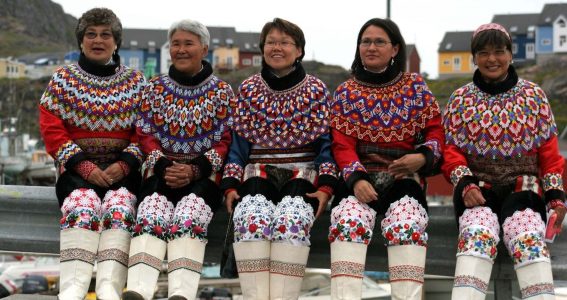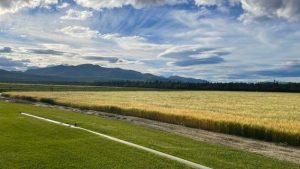Greenlandic Inuit: A Journey Towards Sovereignty and Independence

In the vast expanse of the Arctic, nestled between the North Atlantic Ocean and the Arctic Ocean, lies Greenland. This remote and breathtakingly beautiful island is not only home to stunning landscapes but also to a remarkable journey towards self-determination, sovereignty, and independence for its Indigenous people, the Greenlandic Inuit.
The Pursuit of Inuit Sovereignty in Greenland
Since 2009, Greenland has experienced a significant shift in its political landscape, marked by the passing of the Self-Government Act (SGA). This act represented a culmination of three decades of limited “home rule” autonomy and the transfer of mineral and oil rights from Denmark to Greenland. It granted Greenland extensive self-government and, crucially, the option of full independence from Denmark in the future.
The Three Pillars of Aspiration
During a research expedition in 2013, 17 Greenlanders were interviewed to gauge their perspectives on self-government. Three paramount issues emerged: recognition as a distinct people, the pursuit of independence, and access to mineral resources. These pillars underpin the aspirations of the Greenlandic Inuit.
A Legal Framework for Self-Governance
The Greenland Self-Government Act builds upon the powers established in the Home Rule Act of 1979. It offers Greenland the opportunity for increased self-governance and potential independence. However, Denmark retains control over certain key aspects, including the constitution, citizenship, Supreme Court, foreign affairs, defense, and currency.
Under this act, Greenland can elect its own parliament and government. The Inatsisartut, Greenland’s legislative assembly, comprises 31 elected members who serve four-year terms. Despite the autonomy gained, Greenland’s governance structure remains a Nordic-style cabinet-parliamentary system, and there is no current plan to establish a government based on Inuit values and governance principles.
Former premier Aleqa Hammond expressed satisfaction with the agreement, asserting that it reflects Inuit governance due to the substantial Inuit involvement in its formulation.
A Path to Independence?
Independence is a shared dream among many Greenlanders. They view it as a legitimate aspiration deeply rooted in Inuit culture. The Self-Government Act explicitly recognizes the right to independence, emphasizing that the decision regarding Greenland’s independence rests with its people.
Achieving independence hinges on implementing self-government fully and gaining authority over all 33 areas of jurisdiction outlined in the agreement. However, challenges loom large, including economic, logistical, and social hurdles. The pragmatic pursuit of independence has sometimes overshadowed abstract considerations of Indigenous rights.
Economic Realities and Resource Extraction
Greenland’s quest for independence is intrinsically linked to its economic self-sufficiency, driven by resource extraction. Yet, this poses a complex dilemma, as it necessitates balancing economic growth with environmental and social responsibility.
The downturn in global mineral, oil, and gas prices has impacted Greenland’s prospects for independence. Several major oil companies have withdrawn from exploration in West Greenland, further complicating the path to self-reliance.
The right to mineral resources is viewed as pivotal by many, but it also brings pressure to develop these resources aggressively. The country’s self-government expansion is contingent on economic diversification and self-sufficiency, which has sparked extensive debates and public discourse on resource extraction.
Balancing Development and Preservation
The challenge lies in finding a balance between resource development, economic growth, and preserving Greenlandic culture and environment. Large-scale projects, like the Isua iron-ore open pit mine, have raised concerns about insufficient public consultation, environmental impact, and the importation of foreign laborers.
Greenlanders grapple with the rapid pace of development and its potential repercussions on their way of life. Ambiguity surrounds the future as the country navigates uncharted territory.
A Complex Path to Self-Determination
Greenland’s journey toward self-determination and independence is a complex one. While it represents a significant achievement in Indigenous self-governance, it is not without challenges.
Continuing Colonial Influences
Despite self-government, Greenland still contends with lingering colonial influences. A considerable number of Danish civil servants, often lacking cultural competence, occupy key positions within the government. This reliance on Danish expertise and a lack of continuity among Danish professionals hinder the full realization of Indigenous self-determination.
An Inspiration for Indigenous Peoples Worldwide
Greenland’s self-government journey serves as an inspiration to Indigenous peoples worldwide, particularly other Inuit communities in the Arctic. It highlights the possibility of Indigenous self-determination within Western institutional frameworks, sparking hope for others seeking greater control over their destinies.
Greenland’s quest for self-determination, sovereignty, and independence is a multifaceted and evolving journey. The right to mineral resources, international recognition, and the pursuit of independence constitute the core aspirations of the Greenlandic Inuit. Challenges abound, particularly in balancing economic development with cultural preservation. Yet, Greenland’s path serves as a beacon of hope for Indigenous peoples worldwide, showcasing the possibilities of self-determination within established institutional frameworks. As Greenland navigates this uncharted territory, the world watches with anticipation and support.
In the realm of self-determination, Greenland stands as an exemplar of progress, inspiring Indigenous communities globally to chart their unique paths towards sovereignty and self-governance.



